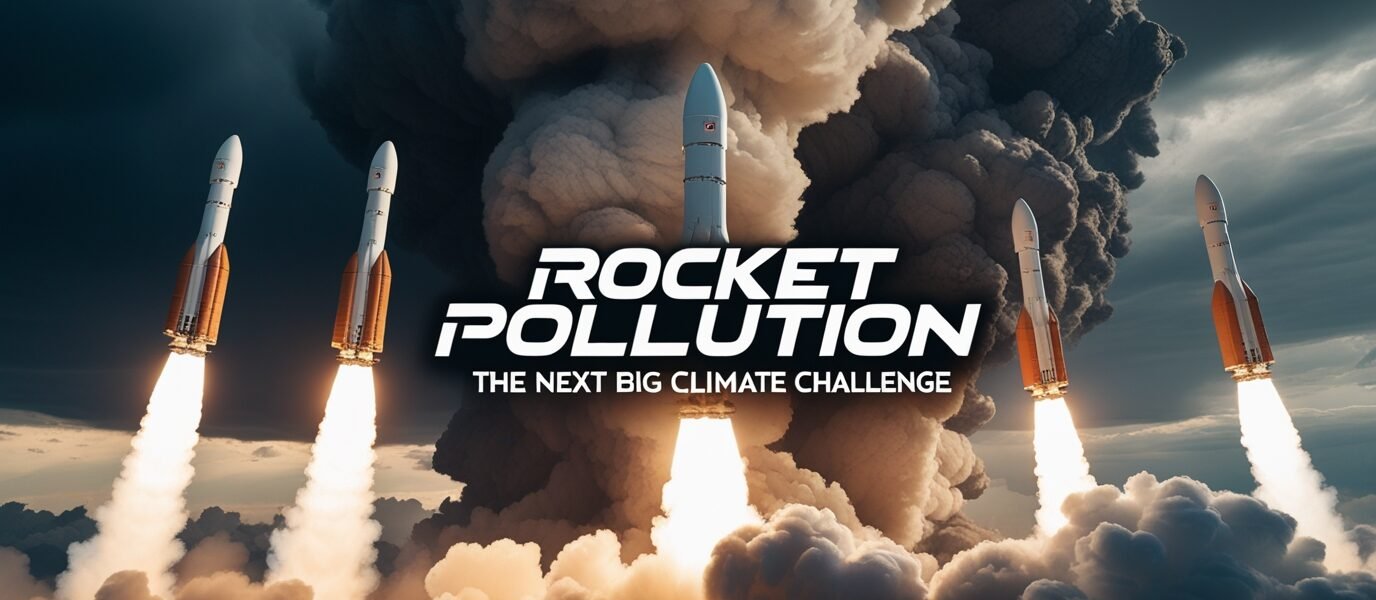I used to love watching rocket launches. Now, I see them differently. That brilliant plume of fire and smoke isn’t just a symbol of ambition; it’s a sign of a problem we’re just starting to understand. While we’ve been focused on cleaning up our cars and factories, a new pollution source has been quietly climbing into our upper atmosphere, and it’s on the verge of becoming a major issue. This isn’t about stopping space exploration. It’s about making sure we don’t solve one problem by creating another, even bigger one.
What Rockets Leave Behind:
That beautiful trail isn’t just steam. It’s a complex chemical soup, and the recipe depends on the fuel. The biggest concern is black carbon (soot) from kerosene-fueled engines, like those on SpaceX’s Falcon 9.
Think of it this way: soot from a diesel truck lasts a few weeks in the lower atmosphere before rain washes it out. But when a rocket injects that same soot directly into the pristine stratosphere, the calm, stable layer above our weather, it can linger for three to five years. Up there, it doesn’t just dirty the air; it acts like a tiny black umbrella, absorbing sunlight and heating up the thin atmosphere itself. The effect per particle is hundreds of times more potent than greenhouse gases lower down.
Other fuels have their own issues. Some older propellants release chlorine, an ozone-killer. Even “cleaner” liquid methane still produces CO₂ and water vapor at high altitude, which also contributes to warming. The problem isn’t one single evil chemical; it’s the act of repeatedly depositing any particles into a part of our atmosphere that has no natural cleaning mechanism.
Why This Time is Different:
A single rocket launch isn’t going to doom the planet. The issue is the exponential rise. We’ve gone from a handful of launches a year to one nearly every week. Companies are building constellations of tens of thousands of satellites. Each deployment requires a launch. We’re looking at a future with potentially hundreds of launches annually. The pollution doesn’t have time to dissipate. It just accumulates.
It’s the classic tragedy of the commons. The impact of one company’s launches is minimal. But the collective impact of all companies and nations could alter the chemistry of our upper atmosphere before we even fully understand the consequences. We’re conducting a massive, uncontrolled experiment on ourselves.
The Regulatory Black Hole:
Here’s the scariest part: no one is really regulating this. There are strict rules for what you can emit from a factory smokestack or a car tailpipe. But for rocket emissions? It’s a legal and scientific wild west.
There’s no global agreement. No agency has the authority to set binding limits on what can be released into the stratosphere. The oversight is focused on safety and debris, not atmospheric chemistry. We’re racing forward with one foot on the accelerator while the other hasn’t even found the brake.
Demanding a Cleaner Launch:
The solution isn’t to ground the rockets. It’s to innovate faster. The pressure needs to come from the public to demand green propellants and invest in the research to make them viable.
The good news is that the seeds are there. Companies are already experimenting with fuels derived from biological sources and even green hydrogen, which primarily emits water vapor. The challenge is making them as powerful and reliable as traditional fuels. It will take investment and political will.
We have a chance to get ahead of this. We can learn from our past failures and build a sustainable space economy from the start, rather than spending the next fifty years trying to clean up a mess we made in the sky.
FAQs:
1. Isn’t the CO₂ from rockets negligible compared to airplanes?
In total volume, yes. But its location is what matters. Emitting CO₂ directly into the sensitive upper atmosphere has a disproportionately larger warming effect than emitting it at ground level.
2. Which rocket fuel is the worst?
Solid rocket boosters (used on NASA’s SLS) are among the worst, releasing chlorine and alumina particles. Kerosene (RP-1) fuels are next due to their high black carbon output.
3. Are any companies trying to fix this?
Yes. Companies like Blue Origin are developing liquid hydrogen/oxygen engines (which emit mostly water vapor). Research is also ongoing into bio-derived fuels for smaller launch vehicles.
4. What can I actually do about this?
Awareness is the first step. Support organizations and researchers advocating for sustainable space practices and stricter atmospheric regulations for launch providers. Ask the question: “What is your company’s plan for sustainable propellants?”
5. Could this affect the ozone layer?
Yes, that is a significant concern. Certain rocket exhaust products, like chlorine and nitrogen compounds, can catalytically destroy ozone molecules in the stratosphere, potentially reopening the hole we worked so hard to fix.
6. Is this just a problem for the future?
No, it’s a problem for now. The rapid increase in launch frequency means the cumulative impact is already beginning. The time to address it is before it becomes a full-blown crisis.

